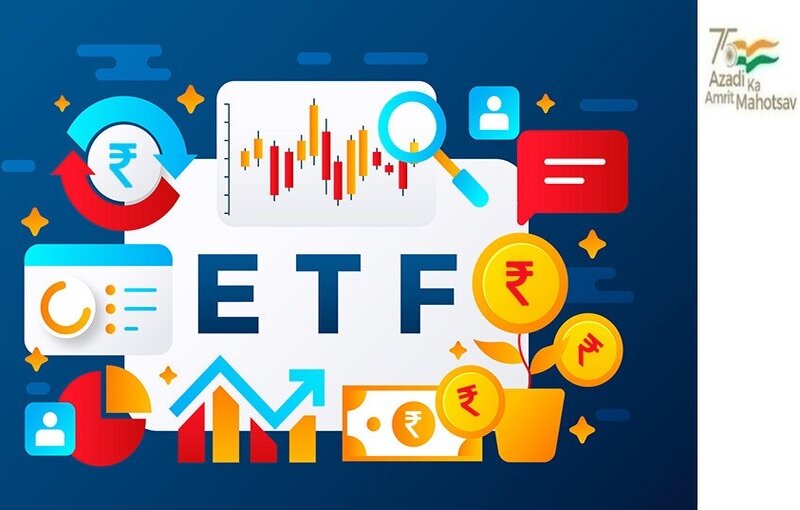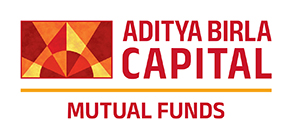Passive funds for investors of every risk profile

Passive funds are growing in popularity all across the world especially in developed markets. In the US passive equity assets under management (AUM) has already overtaken active equity AUM (source: Financial Times, June 2022). In the next few years passive will overtake overall active AUM (including fixed income) in the US as per Bloomberg projections. India is also catching up with the global trend towards passive. Passive AUM has seen explosive growth in the last few years, especially since the COVID-19 pandemic. Industry AUM of Exchange Traded Funds (ETFs) and index funds was nearly Rs 7 lakh crores (as on 30th April 2023, source: AMFI) multiplying near 4 times in the last 3 years.
What are passive funds?
Passive funds invest in a basket of securities which track a market index e.g. Sensex, Nifty etc. Weights of securities in the fund mirror the weights of the constituents in the index. Unlike actively managed mutual funds, a passive fund does not aim to beat the market. In other words, passive funds give market returns subject to tracking error. Apart from tracking equity and debt market indices, some passive funds track prices of commodities e.g. Gold, Silver.
What are benefits of investing in passive funds?
- Active funds have to be overweight / underweight on some securities relative to the benchmark. As a result there is some unsystematic risk (stock or sector specific risk) in addition to market risk in actively managed funds. Passive funds, on the other hand, invest in a basket of securities replicating a particular market index. For example, a Nifty 50 ETF will invest in all the 50 stocks which constitute the Nifty 50 index in the same weight as the index constituents. There is no unsystematic risk in passive funds; they are subject only to market risks.
- There is the old proverb, “to err is human”. A passive fund is not subject to human biases since they simply tracks a benchmark index.
- The biggest advantage of passive funds is low cost or Total Expense Ratio (TER). For example, if the TER of an ETF is 2% lower than the TER of an actively managed fund, then on an investment of Rs 10 lakhs, you may be gaining as much as Rs 15,000 – 20,000 every year in the ETF compared to the active fund (assuming same performance before TER). Over long investment tenures this can result in considerable difference in returns due to the power of compounding.
Passive funds for different risk profiles
Though passive funds have gained a lot of popularity among investors, passive AUM is dominated by institutional investors. However, there is growing retail and HNI interest in passive funds. There is a wrong perception among many investors that passive funds are mostly about investing in leading market indices e.g. Nifty, Sensex, Bank Nifty etc and Gold. In the last few years, a large number of passive funds have been launched for different asset categories and sub-categories e.g. broad market equity index (e.g. Nifty 500), commodities (e.g. Gold, Silver), debt (e.g. Target Maturity Funds) and international (e.g. US and other international markets). Passive funds can meet the needs of investors of a wide variety of risk profiles.
Asset classes for risk profiles
Different asset classes have different risk profiles. Equity, as an asset class, is more volatile than other asset classes, but as per historical data, equity has the potential to give higher returns than other asset classes. Debt, as an asset class, is less volatile than equity; debt generates income and provides stability to your portfolio. Gold is less volatile than equity and in the long term has the potential of generating inflation adjusted returns. Silver is more volatile than gold but has the potential of outperforming gold in bull markets because silver’s industrial use.
Passive funds for different risk profiles
- Low to moderate risk profile: If your risk profile is low to moderate, then passive debt funds will be suitable investment options. Passive debt funds usually invest in Government Securities (G-Secs), State Development Loans (SDLs) and PSU Bonds. Currently, there are two types of passive debt funds – passive Gilt Funds (which invests in G-Secs of different maturities) and Target Maturity Funds. Target Maturity Funds are the most popular sub-category of passive debt funds. These schemes are open ended but have a defined maturity date.
- Moderate to moderately high risk profile: Precious metal passive funds e.g. gold, silver ETFs or FOFs etc can be suitable investment options for investors who do not have high risk appetites. An advantage of adding precious metals especially gold to your portfolio is superior diversification. Gold is usually counter-cyclical to equities. Adding gold to your portfolio will reduce your portfolio volatility considerably in market corrections. Gold is also seen as a hedge against inflation in the long term. You can get further diversification by adding silver also to your portfolio.
- High to very high risk profile: If you have high risk appetite, then passive equity funds can be suitable investment option for you since these funds have the potential of wealth creation over long investment horizon. Depending on your risk appetite you can invest in large cap oriented funds (e.g. Nifty, Sensex ETFs or index funds) or Sector ETFs (e.g. Bank Nifty ETF or index funds). Sector ETFs or index funds can be more volatile than broad index (e.g. Nifty) based ETFs or index funds. You should invest according to your risk appetite. Investors with high risk appetites can also consider investing in international funds. Historical data shows that there is relatively low correlation in returns of different markets. For example, India may outperform US market in some years and underperform in some years. Adding international funds to your portfolio will provide richer diversification to your portfolio.
Conclusion
In this blog post, we have discussed how passive funds can play a role for investors of every risk profile. You should select the appropriate scheme based on your risk profile. Active and passive funds both have important roles in your investment portfolio. In some asset classes active funds can enhance your portfolio returns with alpha generation as discussed, whereas other asset classes and asset sub-categories may be more suited for passive investments. You should consult with your mutual fund distributor or financial advisor if you need help in understanding your risk profile and constructing your portfolio with a mix of active and passive funds.
Disclaimer: An Investor education and Awareness initiative of Aditya Birla Sun Life Mutual Fund.
All investors have to go through a one-time KYC (Know Your Customer) process. Investors to invest only with SEBI registered Mutual Funds. For further information on KYC, list of SEBI registered Mutual Funds and redressal of complaints including details about SEBI SCORES portal, visit link https://mutualfund.adityabirlacapital.com/Investor-Education/education/kyc-and-redressal for further details.
Mutual Fund Investments are subject to market risk, read all scheme related documents carefully.
RECOMMENDED READS
LATEST ARTICLES
- Investor Rights in Mutual Funds
- Responsibilities of Regulators and Key Constituents of the Mutual Fund Industry
- ABSL Balanced Advantage Fund: A proven all seasons fund for growth and stability
- ABSL SIP for Life: Plan to build and enjoy your wealth
- Aditya Birla Sun Life Flexi Cap Fund: Legendary track record of wealth creation
Follow Birla Sun Life MF
More About ABSL MF
POST A QUERY






